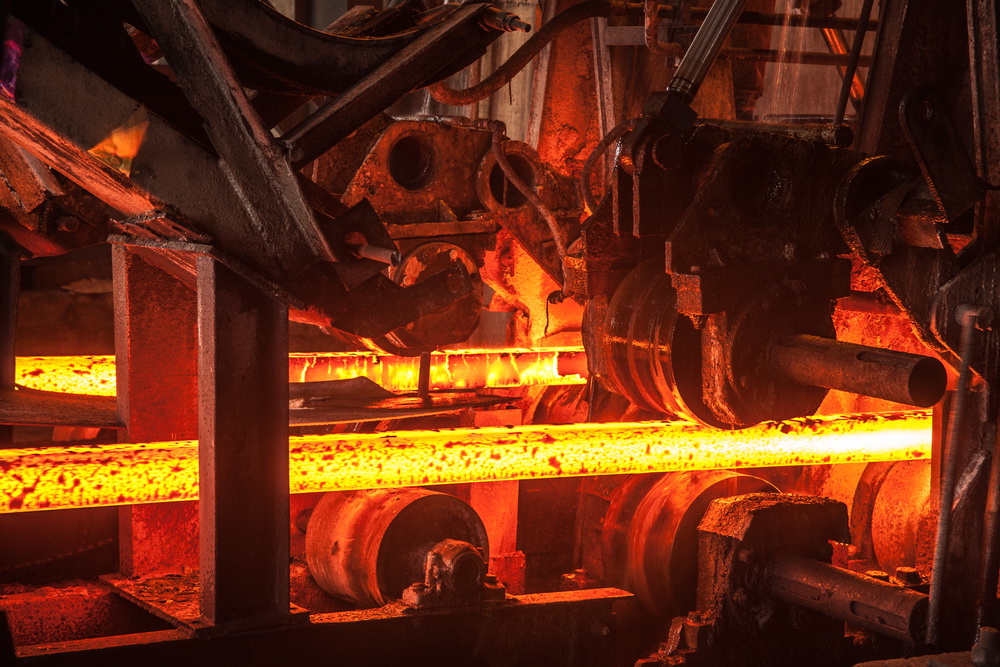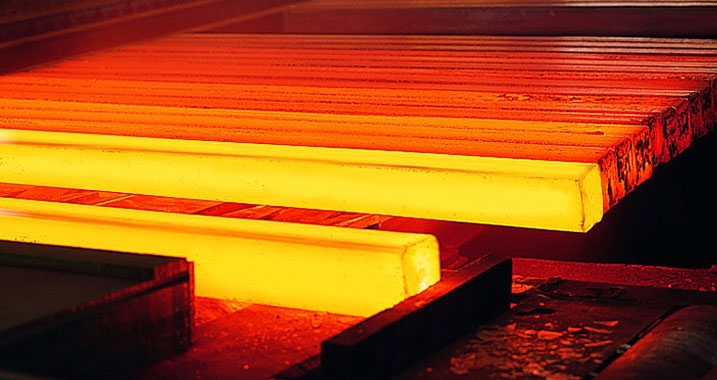Iron Billet counting system using AI
In an era defined by technological innovation, the iron industry stands on the brink of transformation with the advent of the Iron Billet Counting System using Artificial Intelligence (AI). This groundbreaking approach is reshaping conventional practices, offering a glimpse into the future of iron manufacturing. In this extended exploration, we will delve deeper into the complexities of this cutting-edge technology, examining its impact on iron billet management, the intricacies of AI algorithms, and the broader implications for the industry.
Table of Contents
Understanding Iron Billets:

To truly grasp the significance of the AI-powered counting system, it’s crucial to delve further into the characteristics of iron billets and their role in industrial processes. Iron billets, whether cast or otherwise, serve as the raw material for a myriad of iron products. Their semi-finished form makes them versatile and adaptable to a wide range of manufacturing applications.
The Challenges of Traditional Billet Counting:
Traditional methods of counting iron billets are fraught with challenges. Manual counting, once the standard practice, is labor-intensive and susceptible to errors. As industrial demands escalate, the need for a more efficient, accurate, and scalable counting system becomes paramount. The limitations of manual counting highlight the necessity for technological interventions, paving the way for AI to revolutionize the process.
The Evolution of Artificial Intelligence in Manufacturing:
Before delving into the specifics of the Iron Billet Counting System, it’s essential to understand the broader evolution of artificial intelligence in manufacturing. AI has found applications across industries, streamlining processes, optimizing resource allocation, and enhancing overall efficiency. In the context of iron manufacturing, AI contributes significantly to quality control, predictive maintenance, and process optimization.
The AI-Powered Iron Billet Counting System in Action:

Algorithmic Intelligence:
At the heart of the AI-powered Iron Billet Counting System lie sophisticated algorithms designed to mimic human cognition. These algorithms, often rooted in deep learning, enable the system to recognize patterns, shapes, and sizes of iron billets with a level of accuracy that surpasses human capabilities.
Computer Vision Technology:
Central to the system’s functionality is computer vision technology. Equipped with high-resolution cameras and advanced sensors, the system captures real-time images of iron billets as they move through the production line. This visual data is then processed by the AI algorithms to determine the quantity and characteristics of the billets.
Machine Learning Models:
The AI system relies on machine learning models that undergo extensive training to develop the ability to accurately identify and count iron billets. Training involves exposing the system to diverse datasets, allowing it to learn and adapt to variations in billet shapes, sizes, and orientations.
Integration with the Production Line:
Seamless integration with the existing production line is critical for the success of the AI-powered system. This integration ensures that the counting process does not disrupt the overall manufacturing workflow. Collaborative efforts between AI specialists and production line engineers are vital to achieving this harmony.
Implementation Challenges and Solutions:

Initial investment and ROI:
The initial investment required to implement an AI-powered system can be a deterrent for some manufacturers. However, it’s essential to view this as a long-term investment with the potential for substantial return on investment (ROI) through increased efficiency, reduced labor costs, and minimized errors.
Interoperability with Existing Systems:
Ensuring interoperability with existing manufacturing systems can be a complex task. Thorough assessments, planning, and collaboration with IT experts can help overcome this challenge. Customization and adaptability of the AI system to the specific needs of the production line are key considerations.
Data Security and Privacy:
The collection and processing of sensitive production data raises concerns about data security and privacy. Implementing robust cybersecurity measures, encryption protocols, and compliance with data protection regulations is essential to addressing these concerns and building trust in technology.
Employee Training and Acceptance:
The introduction of AI technologies often necessitates training for the existing workforce. Ensuring that employees are familiar with the new system, understand its benefits, and see it as a complement rather than a replacement to their roles is crucial for smooth adoption.
The Impact of AI on Iron Billet Management:
Beyond the immediate benefits of accurate counting, the AI-powered Iron Billet Counting System has far-reaching implications for iron billet management.
Predictive Maintenance: The system’s ability to analyze data in real-time extends beyond counting. It can predict maintenance needs by identifying patterns indicative of equipment wear and tear, contributing to proactive maintenance strategies.
Supply Chain Optimization: Accurate data on iron billet quantities facilitates better supply chain management. Manufacturers can optimize inventory levels, reduce excess stock, and ensure a more efficient flow of materials through the production process.
Quality Assurance: The AI system contributes to enhanced quality control by identifying irregularities in billet characteristics. This proactive approach ensures that only high-quality billets proceed through the manufacturing process, reducing the likelihood of defects in final products.
Resource Allocation: Insights derived from the AI system’s data analysis enable manufacturers to allocate resources more effectively. This includes optimizing workforce deployment, scheduling maintenance activities, and fine-tuning production processes for maximum efficiency.
The Future of AI in Iron Manufacturing:
The implementation of the AI-powered Iron Billet Counting System is just the beginning of the industry’s embrace of artificial intelligence. As technology continues to advance, we can anticipate further innovations and integrations in iron manufacturing processes. The future may bring enhanced AI capabilities, such as real-time process optimization, automated decision-making, and even greater connectivity within smart manufacturing ecosystems.
Final Thoughts:
In conclusion, the AI-powered Iron Billet Counting System represents a paradigm shift in the iron industry, offering a glimpse into a future where efficiency, accuracy, and data-driven decision-making reign supreme. As manufacturers navigate the challenges of implementation, the long-term benefits of this technology promise to reshape the landscape of iron billet management and, by extension, the broader realm of industrial manufacturing. The journey towards a smarter, more efficient iron industry is underway, with AI leading the way into a new era of production excellence.

